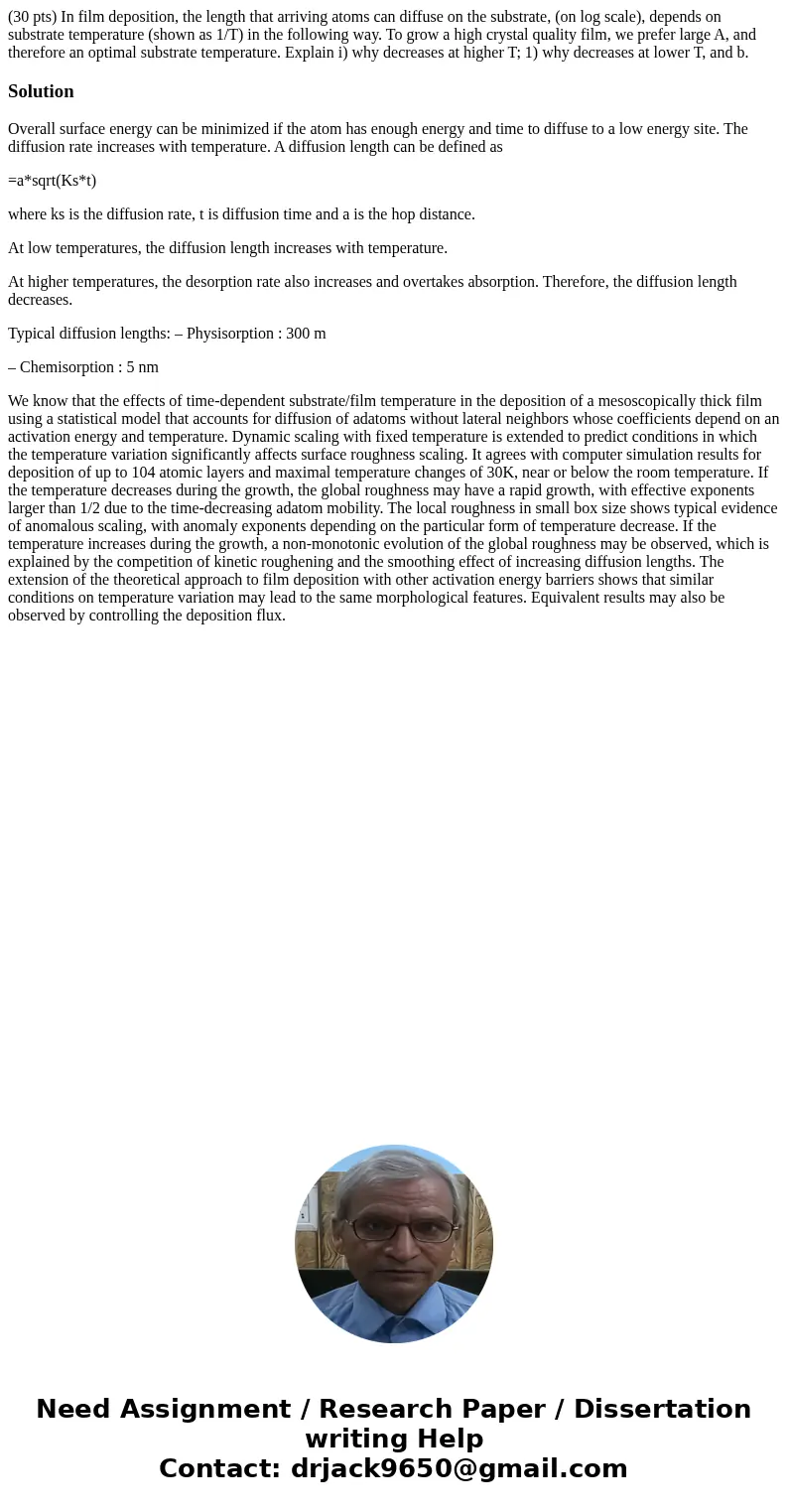30 pts In film deposition the length that arriving atoms can
Solution
Overall surface energy can be minimized if the atom has enough energy and time to diffuse to a low energy site. The diffusion rate increases with temperature. A diffusion length can be defined as
=a*sqrt(Ks*t)
where ks is the diffusion rate, t is diffusion time and a is the hop distance.
At low temperatures, the diffusion length increases with temperature.
At higher temperatures, the desorption rate also increases and overtakes absorption. Therefore, the diffusion length decreases.
Typical diffusion lengths: – Physisorption : 300 m
– Chemisorption : 5 nm
We know that the effects of time-dependent substrate/film temperature in the deposition of a mesoscopically thick film using a statistical model that accounts for diffusion of adatoms without lateral neighbors whose coefficients depend on an activation energy and temperature. Dynamic scaling with fixed temperature is extended to predict conditions in which the temperature variation significantly affects surface roughness scaling. It agrees with computer simulation results for deposition of up to 104 atomic layers and maximal temperature changes of 30K, near or below the room temperature. If the temperature decreases during the growth, the global roughness may have a rapid growth, with effective exponents larger than 1/2 due to the time-decreasing adatom mobility. The local roughness in small box size shows typical evidence of anomalous scaling, with anomaly exponents depending on the particular form of temperature decrease. If the temperature increases during the growth, a non-monotonic evolution of the global roughness may be observed, which is explained by the competition of kinetic roughening and the smoothing effect of increasing diffusion lengths. The extension of the theoretical approach to film deposition with other activation energy barriers shows that similar conditions on temperature variation may lead to the same morphological features. Equivalent results may also be observed by controlling the deposition flux.

 Homework Sourse
Homework Sourse